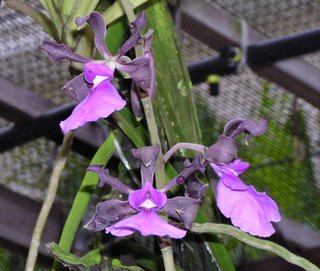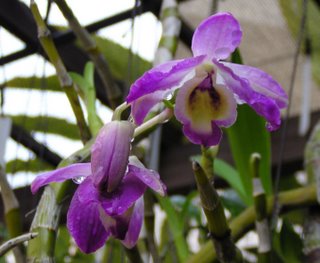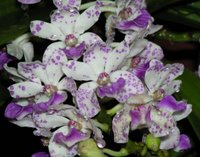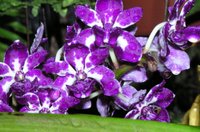Cycnodes Wine Delight
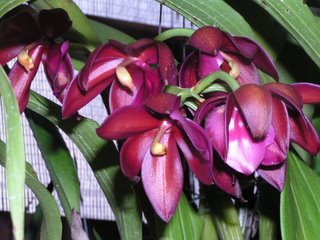
Cycnodes Wine Delight is a hybrid registered by Fuchs Jr. in 1/1/1980. Its parents are Cycnoches lehmanii and Mormodes sinuata. They are also called “Swan Orchids” as the flowers when looked at from the sides resembles a figure of a swan.
Cycnodes Wine Delight produces a wonderful fragrant in the morning only. This is because in their native land, a male bee, which uses the fragrance to manufacture pheromones, is only active in the morning collecting the fragrance. It’s amazing how the relationship between plant and bee develop and evolve. I was wondering will over time because there is no bee to collect the fragrance, will the plant eventually stop producing fragrance??
Cycnoches is a genus with about 60 species. They are natives from tropical America. This is a sympodial genus. This genus as a whole has long slender psuedobulbs, which looked like cigars and has have thin, veined deciduous leaves with an inflorescence that starts from the bottom nodes. Unlike most orchids, this genus produces unisexual flowers. I came across an article saying the light levels during bud development determines the sex of the flower but I couldn’t recall if brighter lights gives male flowers or the reverse. The male flowers have a longer column with a spring loaded pollina.
Some books I read advise growers to actually take the plant out of the pot and cut away all the roots and then place the psuedobulb in a dry lighted area until the new growth is visible. It is then potted up and the new lead is allowed to grow to 2-3" before application of water and fertilizer resumes. If watering starts too early, there is a tendency to loose the plant and the new growth rots easily. After that heavy feeding will ensure big strong psuedobulbs and sometimes my plants with big psuedobulbs will develop a second inflorescence before the plant goes to sleep.
